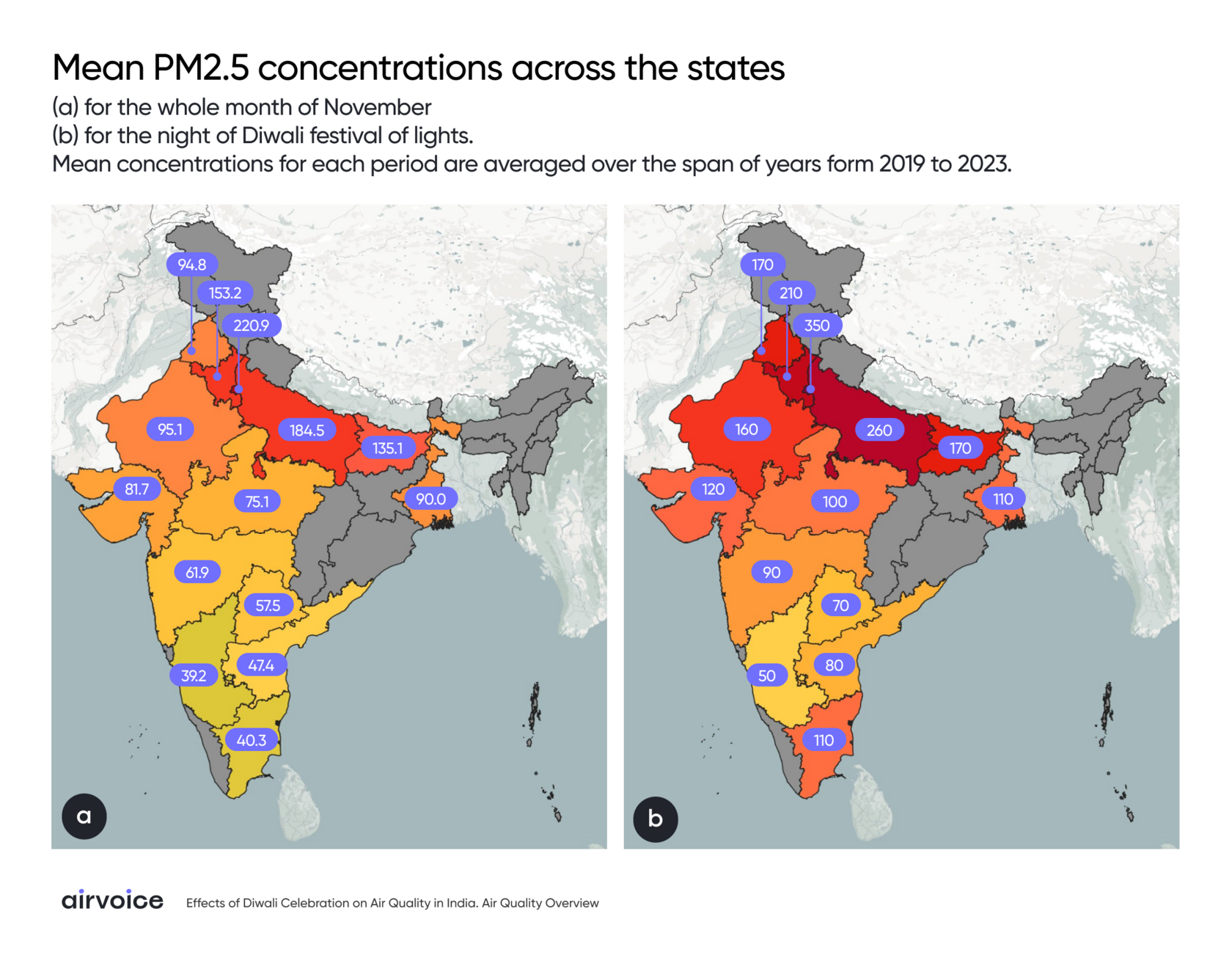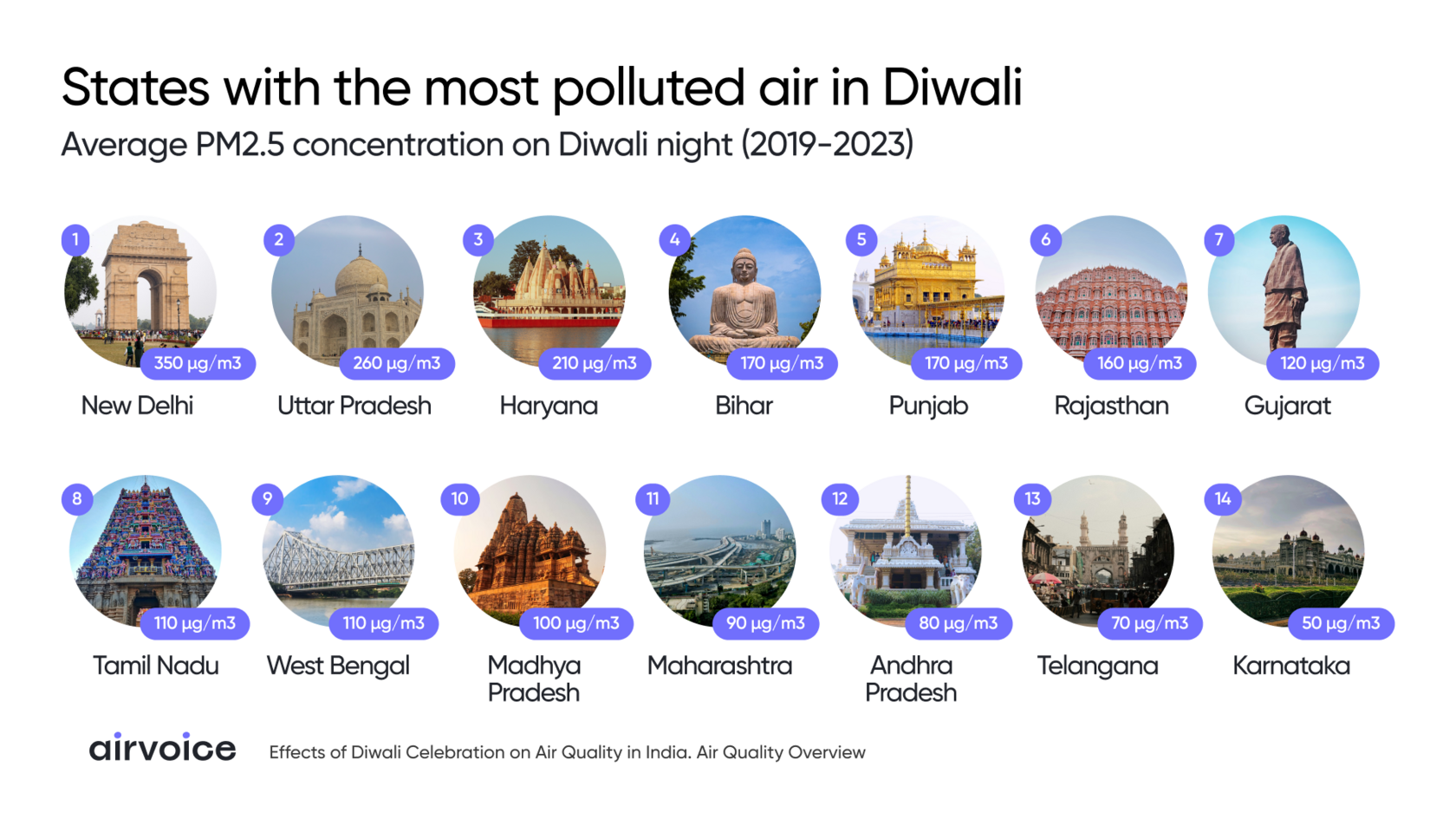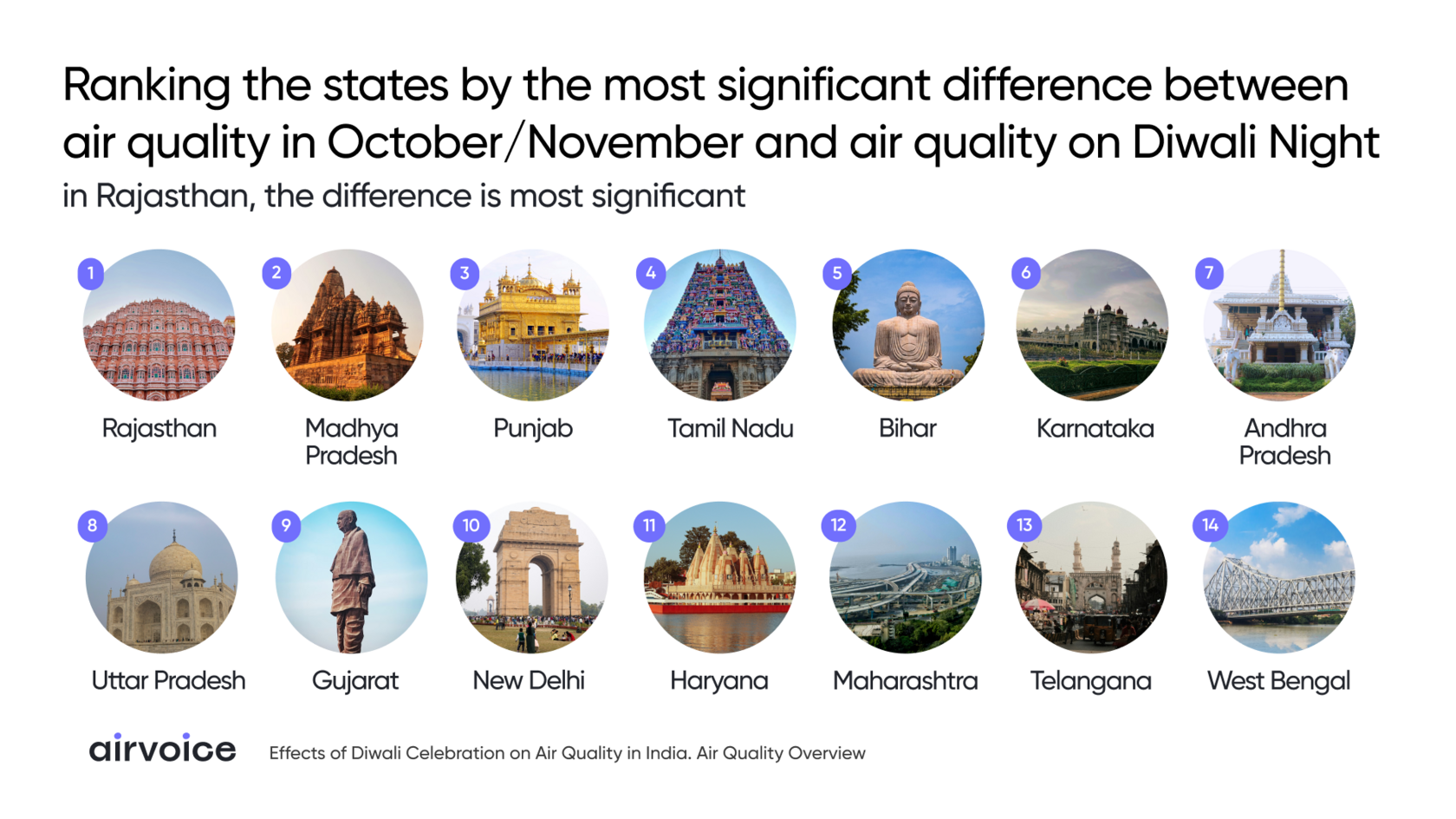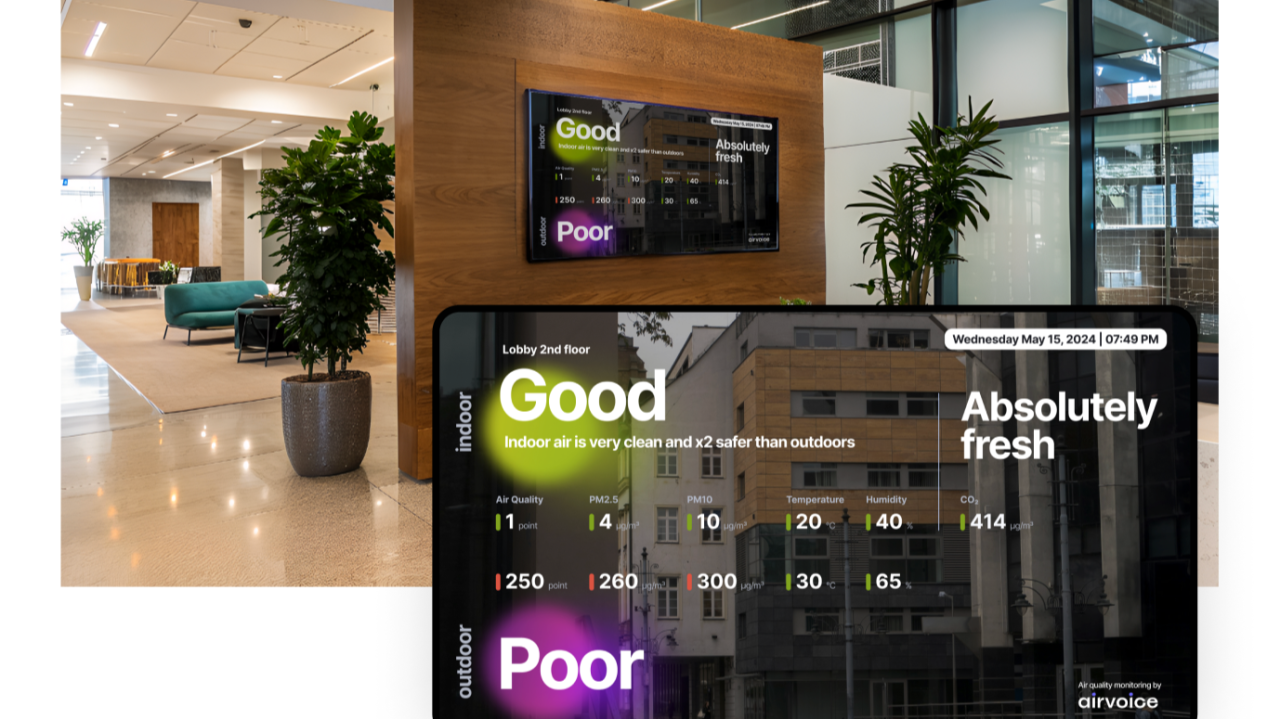Today we unveiled our latest research on the environmental impact of Diwali firecracker emissions across India. This detailed study, which analyzed data from 180 stations in 14 states between 2019 and 2023, provides the most extensive insight to date into how Diwali celebrations contribute to seasonal air pollution.
The report highlights how PM2.5 levels — fine particulate matter that poses serious health risks — spike significantly on the night of Diwali, reaching the highest levels in northern states such as Delhi, Uttar Pradesh, and Haryana. These regions already experience high pollution levels during the post-monsoon season, with firecracker emissions compounding the issue. On the last night of the Diwali festival, PM2.5 concentrations in some areas exceeded National Ambient Air Quality Standards (NAAQS) thresholds by up to nine times.

However, the report also emphasizes that the environmental impact of Diwali-related pollution is transient. According to the findings, air quality tends to return to pre-festival levels within 24 hours after the celebration, refuting long-standing concerns about prolonged effects.
Key Findings:
- PM2.5 Spikes Sharply on Diwali Night: The Festival Night of Diwali sees PM2.5 concentrations soar across northern India, with New Delhi, Uttar Pradesh and Haryana experiencing significant increases. In some areas, PM2.5 levels exceed the National Ambient Air Quality Standards (NAAQS) by up to 875%.
- Air Quality Recovers Within 24 Hours: Despite the drastic increase in pollution during the celebration, the effects are mostly short-lived. In most of the states, air quality returned to pre-festival levels within 24 hours, offering temporary relief despite the sharp spike during the festival.
- Firecracker Bans Ineffective: Even in areas where government bans on firecrackers have been implemented, such as New Delhi, PM2.5 levels continue to rise dramatically, questioning the enforcement of these regulations. In 2023 PM2.5 levels peaked 100% higher on Diwali Night compared to the same date in previous years without firecrackers.
- Toxic Metals Linger in the Air: The report also warns of the long-term health risks posed by toxic metals such as aluminum, manganese, and cadmium, which are released during firecracker burning. These heavy metals can remain in the atmosphere long after the smoke clears, contributing to chronic respiratory illnesses.



Despite the efforts to regulate firecracker usage, including a complete ban in Delhi in 2017, these measures have shown limited effectiveness. Airvoice’s report calls for more innovative solutions to mitigate short-term pollution spikes while respecting cultural traditions.
Speaking on the report, Col. Ashwini K Channan, CEO, Airvoice India said
"Our research team has conducted the most geographically comprehensive study that has been released in recent times. In recent years, the number of monitoring stations has increased substantially in many regions of India and more pre-test air quality information has become available. Unfortunately, however, there are still not enough stations in the whole country. For this reason, only 14 regions were included in the study.
Sufficiency and openness of various air quality data is a prerequisite for improving the situation. After all, thanks to measurements it is possible not only to understand the current situation, but also to assess the effectiveness of measures taken. Therefore, I sincerely hope that the amount of air quality information available and understandable to everyone will grow every year. This will allow people, businesses and governments to make informed decisions."
We extend our deepest gratitude to the Central Pollution Control Board (CPCB) for providing the air quality data critical for this study.
We also appreciate the dedicated efforts of all individuals and organizations committed to improving air quality, which have significantly enriched our research.
We also appreciate the dedicated efforts of all individuals and organizations committed to improving air quality, which have significantly enriched our research.
—
About Airvoice
Airvoice develops and manufactures innovative software and hardware solutions for air quality monitoring and management. Founded in 2021, the company has rapidly evolved to address global air quality challenges. Its commitment to advancing science-backed technologies is demonstrated through strategic partnerships with major universities and research institutions worldwide. These collaborations, including partnerships with the Indian Institute of Tropical Meteorology, the University of Arizona, Nanyang Technological University in Singapore, and many others, enhance Airvoice's robust research in atmospheric physics and AI technology, establishing it at the forefront of the emerging clean air industry.
Airvoice.India, launched in 2022 as a collaborative venture between Airvoice Global and Col. Bhawani Singh, is dedicated to revolutionizing air quality management across India. With its advanced technologies and extensive experience, the company is adept at providing solutions that cater to the unique air quality needs of various sectors, including urban environments, industries, and residential areas. Some of our clients and partners include JSPL, CII, NCAER, and many more.
Focusing on sustainability and innovation, Airvoice.India has quickly become a leader in air quality solutions, contributing to national smart city initiatives and events like the G20 Sustainability Summit in Delhi. The company’s strategic initiatives aim to position India as a central hub for developing and deploying air quality improvements throughout Southeast Asia.
Airvoice.India, launched in 2022 as a collaborative venture between Airvoice Global and Col. Bhawani Singh, is dedicated to revolutionizing air quality management across India. With its advanced technologies and extensive experience, the company is adept at providing solutions that cater to the unique air quality needs of various sectors, including urban environments, industries, and residential areas. Some of our clients and partners include JSPL, CII, NCAER, and many more.
Focusing on sustainability and innovation, Airvoice.India has quickly become a leader in air quality solutions, contributing to national smart city initiatives and events like the G20 Sustainability Summit in Delhi. The company’s strategic initiatives aim to position India as a central hub for developing and deploying air quality improvements throughout Southeast Asia.









